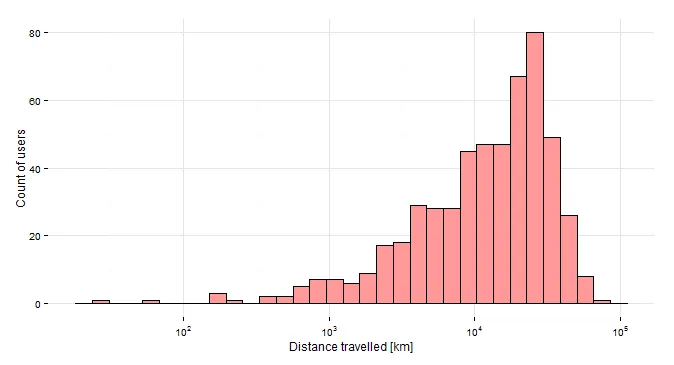我有一个ggplot2的图表,是通过以下方法生成的直方图:
library("ggplot2")
library("scales")
df <- data.frame(test = rnorm(1000, 1000, 40000))
p <- ggplot(df, aes(x = test)) + geom_histogram(colour="black", fill="#FF9999")
# set themes, axes and labels
p <- p + theme_minimal() + theme() + xlab("Distance travelled [km]") + ylab("Count of users")
# transformation
p <- p + scale_x_log10(breaks = trans_breaks("log10", function(x) {10^x}),
labels = trans_format("log10", math_format(10^.x))
)
# plot
p
输出:

我使用了 scales 包将 x 轴标签显示为十的幂,但实际上,只要数字低于,比如10^4和10^-4,我希望将它们显示为小数。对于下面的绘图,这将给出以下轴标签。
100
1000
10^4
10^5
我该如何在trans_format()内完成这个任务,或者有其他更好的解决方案吗?